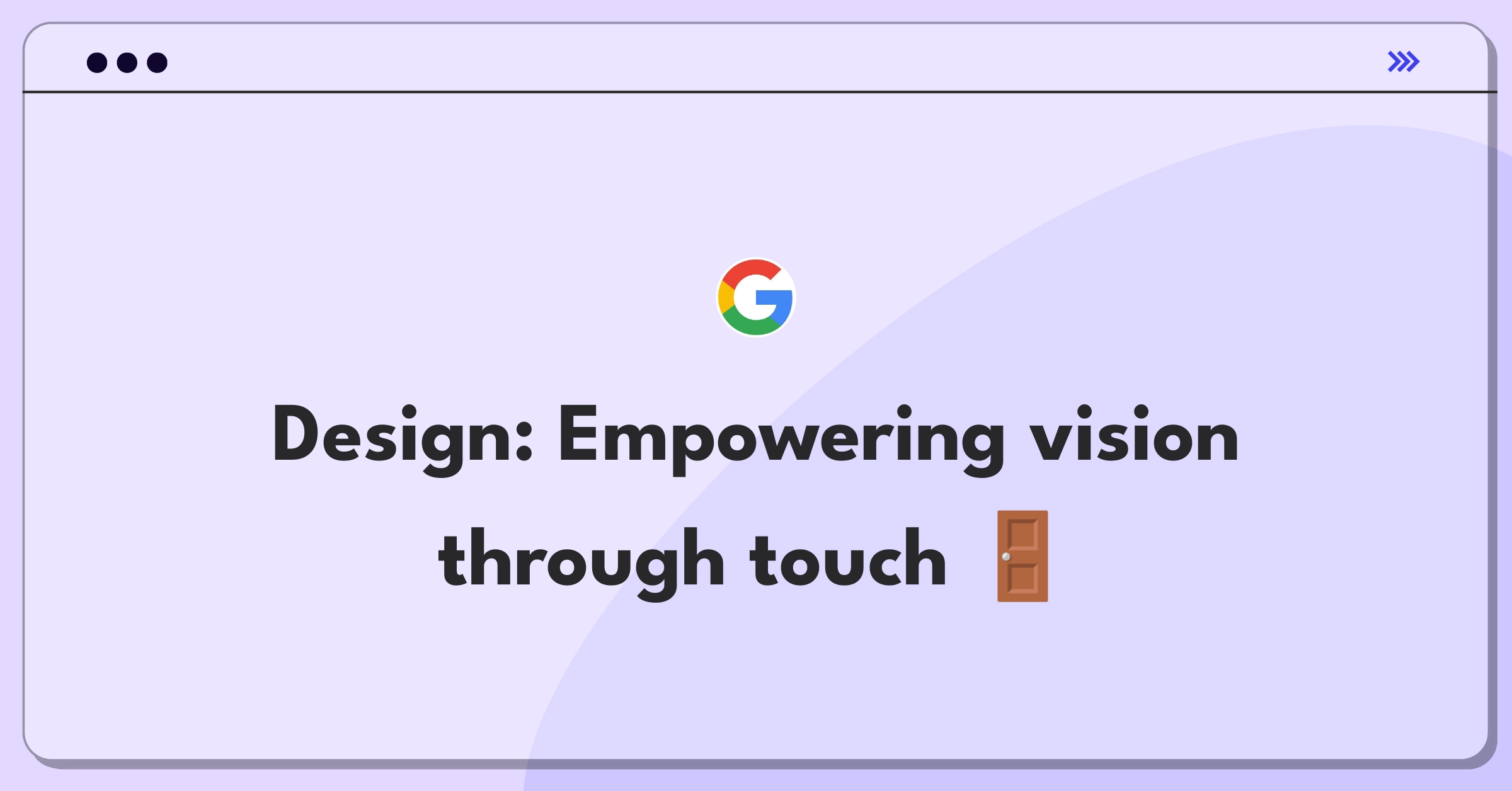Introduction
Designing a door for the visually impaired is a crucial challenge that addresses accessibility and inclusivity in our built environment. This task requires us to consider the unique needs and experiences of visually impaired individuals while creating a solution that's both functional and user-friendly. I'll approach this design problem by first clarifying the context, then analyzing user segments and pain points, before proposing and evaluating potential solutions.
Tip
Does this approach sound good to you? I'm happy to adjust if you have any specific areas you'd like me to focus on.
Step 1
Clarifying Questions (3 minutes)
Why it matters: This helps frame the solution within existing constraints or as a new venture. Expected answer: It's a standalone product. Impact on approach: We'll have more flexibility in design but need to consider manufacturing and distribution from scratch.
Why it matters: Influences our target market and distribution strategy. Expected answer: Yes, primarily B2B with some B2G opportunities. Impact on approach: We'll focus on scalable solutions that can be implemented in various building types.
Why it matters: Helps prioritize features and set realistic goals. Expected answer: 18-month development cycle with a moderate budget. Impact on approach: We'll focus on core functionality first, with potential for advanced features in future iterations.
Why it matters: Informs our understanding of user needs and pain points. Expected answer: Some preliminary research is available, but additional user studies may be needed. Impact on approach: We'll use available data as a starting point but plan for additional user research to validate our assumptions.
Propose the Goal
Given our focus on accessibility and the B2B/B2G market, I believe our goal should be to design a door that significantly improves the independence and safety of visually impaired individuals in various building environments. Does this align with your vision?
Define the Scope
For this product design challenge, should we focus on interior doors within buildings, or should we consider exterior doors as well? I'm inclined to start with interior doors as they present a more controlled environment and are encountered more frequently.
Based on the answers provided, I'll assume we're designing a standalone product for interior doors, targeting B2B and B2G markets, with an 18-month development cycle and moderate budget. We'll use existing research as a starting point but plan for additional user studies.
Subscribe to access the full answer
Monthly Plan
The perfect plan for PMs who are in the final leg of their interview preparation
$99.00 /month
- Access to 8,000+ PM Questions
- 10 AI resume reviews credits
- Access to company guides
- Basic email support
- Access to community Q&A
Yearly Plan
The ultimate plan for aspiring PMs, SPMs and those preparing for big-tech
$99.00 $33.00 /month
- Everything in monthly plan
- Priority queue for AI resume review
- Monthly/Weekly newsletters
- Access to premium features
- Priority response to requested question


.png)